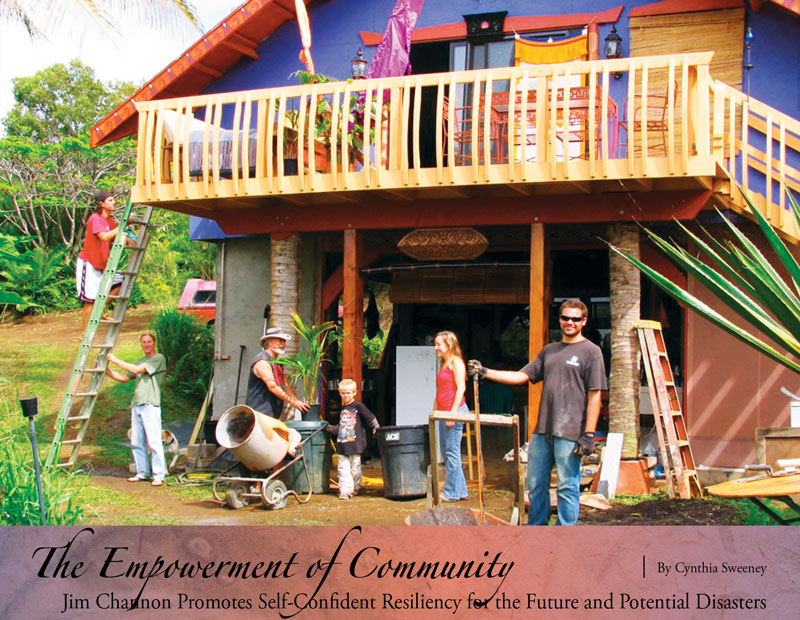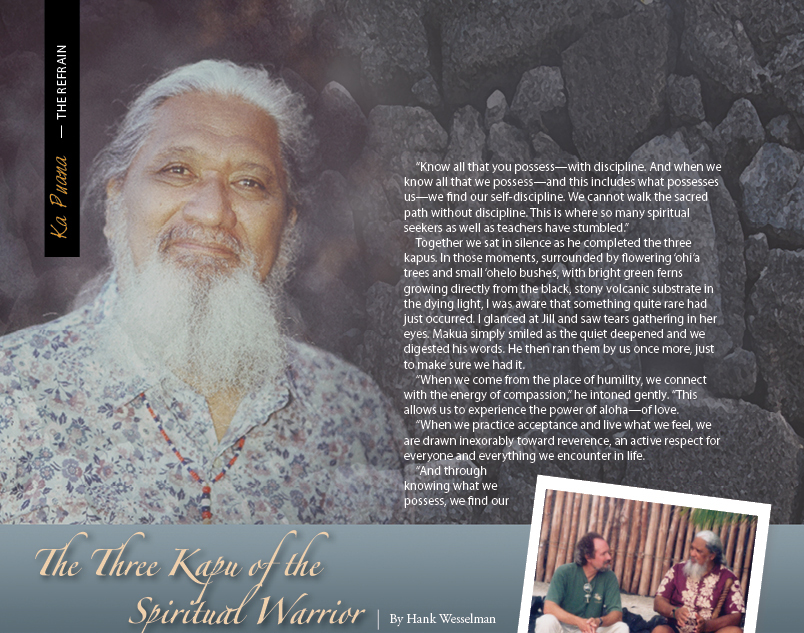
Gather Round the Yurt: Growing in Popularity, the Yurt’s Attractions Begin at the Center

By Noel Morata
There’s a saying that once you’ve stayed in a round home, you can’t go back to a square and angular home. “Primarily, the appeal of yurts covers a large spectrum of the marketplace,” says Becky Kenery, the author of Living in the Round, a comprehensive look at yurts and other round structures from the past to present cultures.
The appeal of living in a round yurt is prevalent in many civilizations where circles symbolize a sense of wholeness, oneness and a spiritual connection to the earth and sky. The word yurt is originally from the Turkic word meaning “dwelling place” in the sense of “homeland”; since then the term has come to be used in reference to the familiar, tent-like structures, but only in other languages.
The Center
The modern-day yurt has a bubble window on the top which creates that spiritual connection between the sky and the ground below, and is also a wonderful source of light. In older civilizations, Mongolians with their gers (traditional circular yurts), the Native Americans with their teepees, and the Turkish nomads with their yurts called uy (oo-ee), make openings at the top of their structures so they can build fires in the middle for cooking and heating. Many civilizations have enjoyed this type of living in the round, which has been at the core of families living and doing daily activities together. Cooking, sleeping and even looking up at the stars at night became sacred gathering rituals for families around the central fire, and thus spiritually connected the occupants to their homes and to each other.
A Stable Structure
Today’s yurts are constructed with two or three layers for the walls—the outer membrane being a thick, UV- and weather-resistant, vinyl fabric or polyester; a middle, bubble-wrapped insulation layer; and the inner wall, which is built upon a lattice wood frame. This is held in place by steel cables wrapped around the lattice, the door frames and rafters. The roof is composed of wood rafters that are hinged to a circular, roof ring and the apex is a clear dome that can be opened for ventilation. Any number of windows or doors can be configured into a structure, and accessories such as awnings, gutters, screen doors and many interior finishes add to the final product. Foundations typically are built up on a deck structure, but they can also be built up to different levels with a slab foundation. With the wrap-around lattice frame, yurts are actually very secure and difficult to break into compared to a stick-frame home. They are also easy to maintain with a regular, yearly washing, a scrub with mild soap and water on the outside membrane.
In spite of their appearance of being temporary, yurt structures are very stable structures. “Yurts are structurally very strong since they are round and have continuous, tied connections on their lattice-worked walls and beams,” says Kenery. They can survive extreme cold, humidity and drought, as well as storms or hurricanes. They are also well suited to all the different climate zones throughout Hawai‘i Island, from the cooler, damp areas up in Volcano to the shoreline and dryer climates of Ka‘ū, Kona and Kohala areas. There seems to be a natural affinity for living in circular structures like yurts on the Big Island, and it is becoming a very popular and cost-effective lifestyle here.
Yurt-Dwellers
New homeowners Jeff and Raji Krepps of Hawaiian Acres are one couple who enthusiastically advocates yurt living. After completing the building of their permanent yurt home-in-the-round, they dubbed it the “mothership.” It is an elevated, two-story yurt with a wrap-around lanai providing incredible views of their property and surrounding areas. The two-story home has an open area downstairs on a slab foundation, which is used for many purposes. Raji, a native from Nepal, grew up in a round home and was attracted to building a yurt for their home on Hawai‘i Island, primarily for the cost and its environmental appeal.
“We moved from O‘ahu to Hawaiian Acres to pare down our lives and live more sustainably with the land,” says Raji, “We were looking for an alternative lifestyle, more environmentally friendly, with a lighter footprint on the land.” So they chose to build a yurt home with a combination stick-frame and surrounding lanai, in order to have the indoor/outdoor benefits. They are very satisfied with the completed home and are continuing their quest for sustainable living. This includes building a composting toilet in an adjoining yurt, having solar power and generating income by selling power to HELCO under a program called “Feed-in Tariff.” They have also started a fruit orchard and vegetable garden, growing their own food, which they are just starting to harvest.
With the help of Melissa Fletcher, the owner/project manager of Yurts of Hawai‘i, their home was completely built to their standards even while they were still living on O‘ahu. Fletcher’s company helps owners create their turnkey and permitted homes from beginning to end, and they also sell yurts to individuals who choose to build the homes on their own. Just on Hawai‘i island, she estimates that there are more than 150 yurt owners and the number is still growing. Fletcher estimates the average cost of building a turnkey home, including all the land preparation work and a catchment system setup, to be approximately $65,000 for a 30-foot diameter, 706-square-foot living area on level ground. Yurts seem to appeal to various groups from older retirees to creative individuals and those that are on a tighter budget as well as people who choose simpler and greener homes.
Another couple who fit into the category of living with a smaller footprint, David and Julia Contreras enjoy their newly-built residence in Fern Forest, a two-story home with an underneath section used for laundry, office, washing and workouts. The living space is ingeniously broken up into a large, open living/kitchen area with separate, short walls delineating office, bathroom and bedroom space.
“We wanted to have the open floor plan, but also want the private areas walled off to give us that sense of privacy,” says Julia. Their home is creatively divided into small areas and rooms within the constraints of a round structure that is only 30 feet in diameter. Originally they built the yurt as an interim home prior to a plan to construct a bamboo-style home. “We decided that we didn’t want to have a mortgage, and we were enjoying living in our yurt so much that we scrapped the larger home and now we are expanding the space with a larger lanai so we can have more outdoor living space for relaxing and entertaining,” says Julia.
They eventually want to incorporate other environmentally friendly designs like solar power and they plan to build a greenhouse for growing their own food.
Eco-Lifestyles
Dan and Emma Kigar, the owners of Colorado Yurt Company, the industry leader in yurts, have another insight into the yurt lifestyle. Colorado Yurt aspires to develop a greener product that supports their clients’ desires to live a more sustainable life with a smaller environmental footprint. Their company only utilizes wood products that are farmed sustainably and excess fabric cuts are minimized, with excess fabric thoughtfully utilized into other products. Their marketplace currently captures an interesting demographic of seniors who want to downsize and not have a mortgage, institutional groups encompassing eco-lifestyles, community groups, non-profits, government and relief-focused programs, individuals looking for creative living situations and/or secondary homes and people who want to live a more sustainable lifestyle.
Outside of newer products and technology that advance their product lines, Dan wants to focus his attention on providing temporary shelters following natural disasters such as the Haiti earthquake. They have started by reaching out to agencies and governments that help stage and build temporary shelters after a natural disaster occurs.
For many yurt owners, the combination of living sustainably, having a smaller footprint on the environment and being spiritually connected to their round homes is a real asset—one that extends beyond economics.
Resources:
You can get a wealth of information on Becky Kenery’s comprehensive and beautifully photographed book entitled Living in the Round. She has a website offering even more information on yurts and the history of round homes.
Contact Yurts of Hawaii


